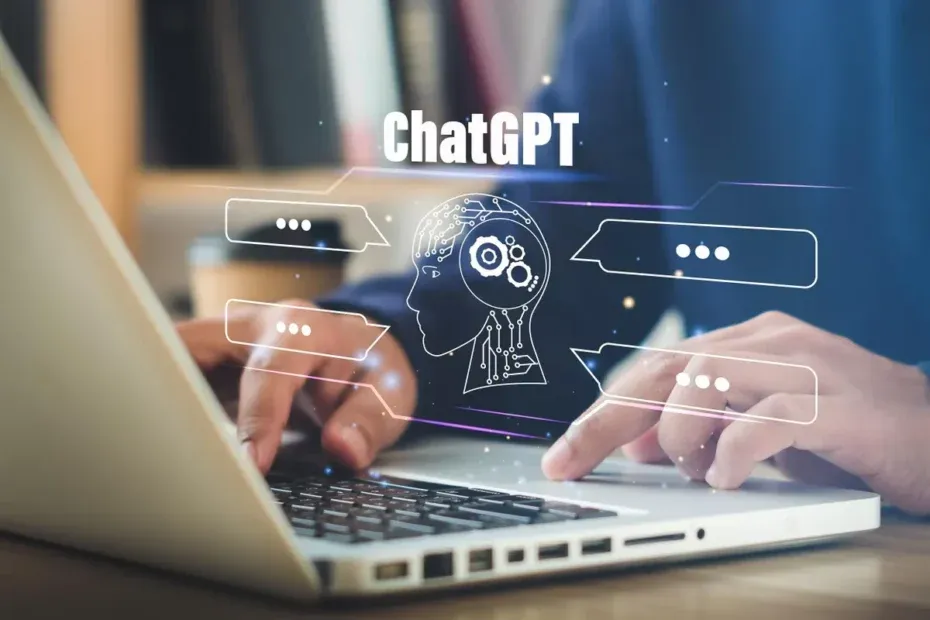ChatGPT: Advantages for Businesses

Behind all the buzz caused by the launch of this innovative technology, ChatGPT carries numerous possibilities that can offer a multitude of advantages for businesses.
If you've been on planet Earth in the last three months, there's a term you’ve likely heard of even if you don't know what it means: ChatGPT! Launched in November 2022 by OpenAI, with Elon Musk as one of its co-founders, this technology has sparked controversies and shaken not just the tech world but various market sectors. While many fear this technology might replace human jobs, others are starting to understand how its benefits can drive a new revolution in innovation in our daily lives.
Let’s delve into this story in today's article. Come with us!
What is ChatGPT?
ChatGPT (Generative Pre-Trained Transformer) is a language model trained to generate clear and coherent texts. The idea behind ChatGPT is to offer a more complete and immersive user experience, delivering very fast results even for seemingly complex questions. Thus, this artificial intelligence goes beyond virtual assistants like Google Assistant and Alexa.
Created as an algorithm based on artificial intelligence, ChatGPT is trained to interact with users through questions posed in the chat and deliver responses in text format. The robot can understand questions and provide extremely coherent answers.
This is possible because ChatGPT's architecture is based on a neural network called Transformer, designed to learn the structure of natural language from large datasets, including books, articles, and even human conversations. With this learning, it can generate coherent and contextual responses based on user questions and inputs.
A competitive advantage of this intelligence over other search tools is that it does not merely retrieve and relay information to the user. It creates complete texts in seconds and interacts in real-time with visitors.
Despite being relatively new, the platform is already available in Portuguese and currently offers a free tool, but it also has a paid service called ChatGPT Plus. This premium service prioritizes algorithm usage for subscribers who want to avoid standard mode instabilities. Sam Altman, the company's CEO, states that there are plans to monetize the service soon, given the extremely high and growing costs of servers and the team responsible for developing the technology.
Shortly after its launch, ChatGPT technology has already been integrated into other applications via an API, enabling incorporation into tools such as:
- WhatsApp Business
- Power Platform (Power Apps, Power BI…)
- Bing
- Word
- Chatbots
How to Use ChatGPT
Like any artificial intelligence, ChatGPT feeds on information it collects from the internet. Therefore, the current internet content forms the algorithm’s database. Based on patterns and information cross-referencing, ChatGPT transforms user queries into responses.
The significant difference here is that these responses can be creative. For instance, when asked about a specific topic, unlike a search engine that returns only results, ChatGPT can contextualize them and elaborate texts, song lyrics, poems, stories, programming codes, recipes, and more. In its latest version (GPT-4), ChatGPT can interpret images, calculate taxes, summarize longer documents, and even interpret memes.
However, there are limitations related to temporal situations and subjectivity of opinions. For example, the chat itself may respond that it cannot discuss recent events since it “learns” from general data and responds based on what it knows, not what is happening in real-time. Moreover, the machine cannot express opinions or emotions—at least not yet.
Using ChatGPT is extremely simple:
Visit chat.openai.com, click “Sign up,” create an account, and follow the website’s instructions.
After completing the registration, you're ready to use the tool.
Try, for example:
- "ChatGPT, create a travel itinerary for Greece, highlighting must-see tourist spots."
- "Generate a Python code to validate if an informed CNPJ number is valid."
- Copy and paste a long text into ChatGPT and ask it to summarize the content.
Why ChatGPT Can Promote Innovations and Advantages for Businesses
Despite initial fears, especially regarding job displacement, it’s important to understand that, like any technological revolution, adaptation is key.
Every innovation brought by technological tools has the potential to open new horizons for human activity, enabling people to move away from operational tasks and overcome productivity and scalability barriers.
For example, programmers can use ChatGPT to find code errors or even write complex bases, while marketing professionals can speed up content production, allowing more free time for strategic performance optimization. This means that while the machine handles operational tasks, humans can explore areas they previously couldn’t due to operational workload.
In medicine, ChatGPT can be used for diagnostic analysis and patient triage. Imagine its application in managing the queues for analysis and waiting times in public health systems and the potential changes it could bring.
In interpersonal relationships, ChatGPT can enhance customer service, create more natural conversations in virtual assistants, and even provide support mechanisms in psychological therapies.
Overall, this new technology emerges as a strategic productivity partner for businesses without diminishing the essential role of humans as validators, correctors, and directors for better use of the tool.
In the not-so-distant future, we will likely see even more applications for ChatGPT and other forms of artificial intelligence. It’s important to be prepared to accompany this evolution and ensure that technology is used responsibly and ethically. We are in the age of artificial intelligence, and the arrival of ChatGPT is just the beginning.
Like any technology, conscious use is the key to a company's success with ChatGPT, leveraging the best features of the tool to make it a strategic ally in the quest for better results.







